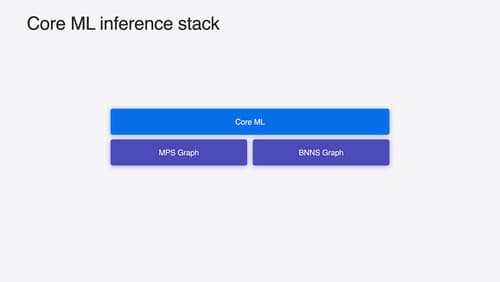How can I use Mistral on-device
Asked on 2024-08-07
1 search
To use Mistral on-device, you can follow these steps as outlined in the WWDC sessions:
-
Model Training and Preparation:
- Define and Train the Model: Start by defining the model architecture and training it using libraries like PyTorch or TensorFlow. Utilize Apple silicon and the unified memory architecture on Mac for high-performance training.
- Convert to Core ML Format: Convert the trained model into Core ML format using Core ML tools. This step includes optimizing the model representation and parameters to achieve great performance while maintaining accuracy.
-
Model Integration:
- Integrate with Apple Frameworks: Use Core ML to integrate the model into your app. Core ML provides a unified API for performing on-device inference across various machine learning and AI model types. It optimizes hardware-accelerated execution across the CPU, GPU, and neural engine.
-
Optimization Techniques:
- Quantization and KV Cache: Apply techniques like quantization and efficient key-value caching to optimize the model further. For example, the Mistral 7B model can be converted to a Core ML model with post-training per-block quantization to run smoothly on Apple silicon.
-
Running the Model:
- Execution on Device: Once integrated, you can run the model on your device. Core ML optimizes the execution, ensuring efficient performance.
For a detailed walkthrough, you can refer to the following sessions and chapters:
- Explore machine learning on Apple platforms (07:32)
- Deploy machine learning and AI models on-device with Core ML (01:57)
- Bring your machine learning and AI models to Apple silicon (19:51)
- Platforms State of the Union (18:43)
These sessions provide comprehensive guidance on preparing, optimizing, and deploying machine learning models, including Mistral, on Apple devices.

Deploy machine learning and AI models on-device with Core ML
Learn new ways to optimize speed and memory performance when you convert and run machine learning and AI models through Core ML. We’ll cover new options for model representations, performance insights, execution, and model stitching which can be used together to create compelling and private on-device experiences.

Bring your machine learning and AI models to Apple silicon
Learn how to optimize your machine learning and AI models to leverage the power of Apple silicon. Review model conversion workflows to prepare your models for on-device deployment. Understand model compression techniques that are compatible with Apple silicon, and at what stages in your model deployment workflow you can apply them. We’ll also explore the tradeoffs between storage size, latency, power usage and accuracy.

Platforms State of the Union
Discover the newest advancements on Apple platforms.
